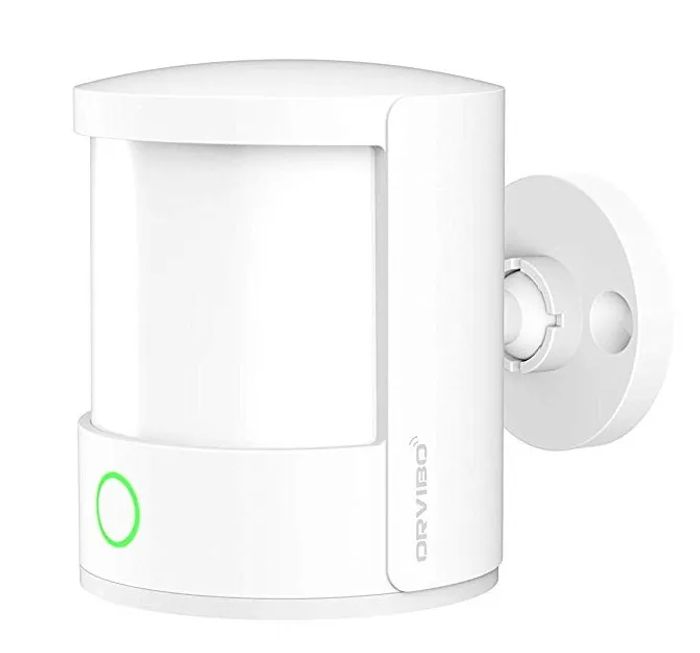Smart Airport
What kind of airport is a smart airport?
Smart airports, digital transformation of airports
Digital transformation in the transportation industry is rapidly changing and evolving using technologies such as artificial intelligence (AI) and the Internet of Things (IoT). In fact, through these technologies, the aviation industry is rapidly becoming digitized. Such a development leads to several challenges for airports as well as passengers. For this purpose, to improve passenger satisfaction and increase operational efficiency of airports, making the airport smart can be a suitable option. Therefore, in the continuation of this article, we will take a look at the various applications of the Internet of Things (IoT) in the airport and specifically talk about the smart equipment of airports, its advantages, features and smart ways.
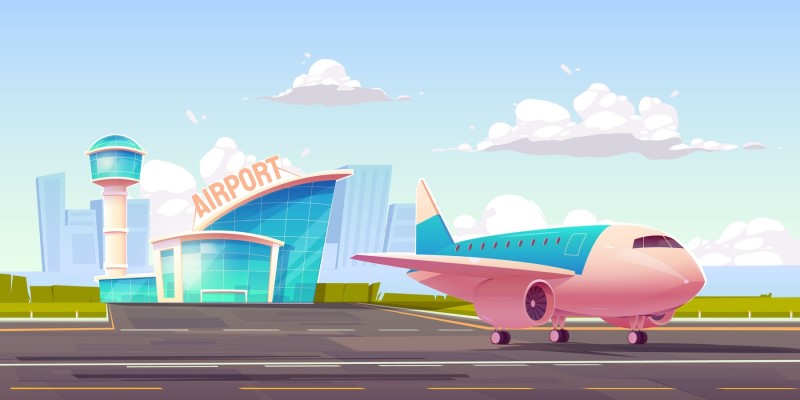
Why did smart airports emerge?
Smart airports have emerged to solve security and management challenges in airports that are increasingly experiencing problems related to the large volume of goods and passengers that pass through them.
In this way, international experts focus on smart airports and combine various developments in the fields of telecommunications, infrastructure, robotics and the Internet of Things (IoT).
What does the smartening of airport mean?
Smart airports are airports that take advantage of technologies such as Internet of Things (IoT) devices, GPS and sensors in different areas in order to improve the control, management and planning of their operations in a centralized digital environment.
Thanks to the use of these advanced technologies, it is possible to improve the performance of employees, optimize the travel experience of passengers and also increase the security of the airport.
For example, it is possible to collect more valuable data about the state of the aircraft in real time, allowing for more precision in maintenance work and optimizing flight safety.
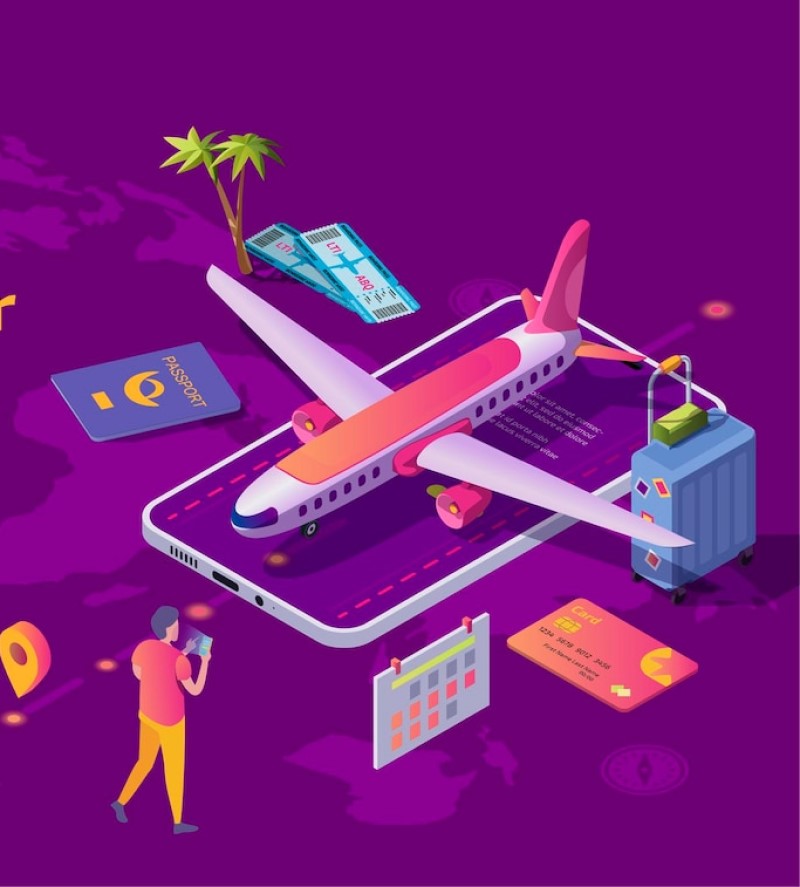
Features of the smart airport
Smart airports seek to optimize all aspects of the airport and create impactful changes in the aviation industry. Since airports are very dynamic environments with constantly changing priorities, so a smart airport must be able to predict events before they happen in order to avoid problems and disruptions such as unexpected influx of passengers, crowding due to flight delays and prevent etc.
Some of the features that smart airports have compared to airports that have not yet reached full digitization are:
• Optimizing operations
In general, smartening processes seek to fully optimize resources. For example, until recently, you had to be at the airport at least two hours before your flight. However, thanks to the use of the Internet of Things (IoT), passengers do not need to be at the terminal early, saving hours of waiting and long queues at the arrival gates.
On the other hand, the use of Internet of Things (IoT) technologies in the airport industry has also been applied to improve the quality of services and improve the passenger experience after each flight.

• Safer airports
Security is an absolute priority in airports, and Internet of Things (IoT) technologies play a key role in this regard. In addition, new biometric technologies promote optimized passenger screening by creating new opportunities.
Intelligent security programs support improved security measures and combine enhanced security with greater operational efficiency while improving the passenger travel experience.
Smart electronic gates are an example of such applications. In these smart tunnels, thanks to the Internet of Things (IoT) and with the help of facial recognition, it allows passengers to pass passport control in just 15 seconds without human intervention.
Another example of airport security systems is the implementation of a smart flight information display system that recognizes passengers' faces.
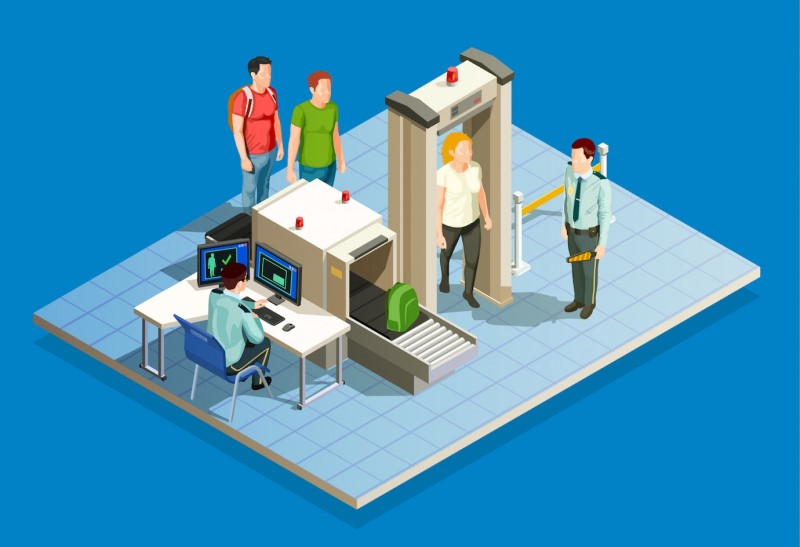
• More sustainable airports
Using sensors and Internet of Things (IoT) equipment in airport facilities and connecting them to an integrated operation platform enables centralized management and control, achieving greater energy efficiency and sustainability.
To ensure a more sustainable infrastructure, high-efficiency hardware, LED lighting, energy-efficient monitors, optimized water systems, etc. are also used.
In the same way, the ability to measure local temperature, air quality, condition of inlets or ventilation, allows for optimal management of air conditioning and environmental health.
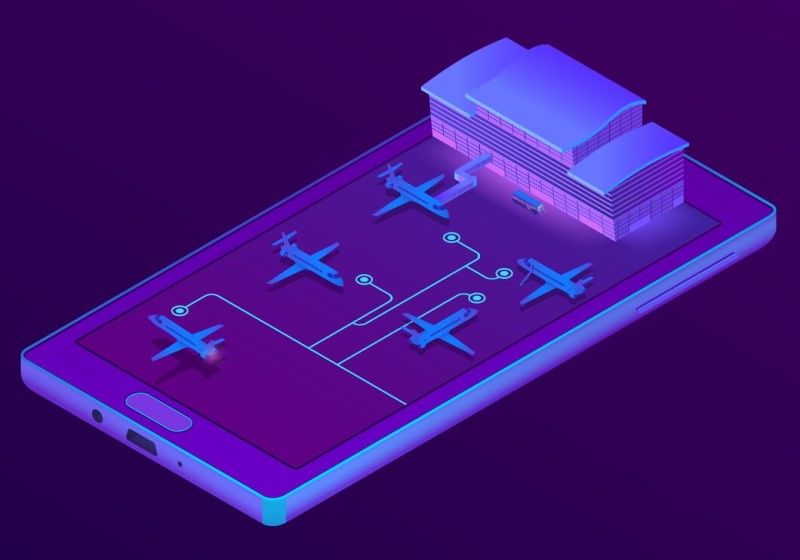
Which parts of an airport can be made smart?
With the help of Internet of Things (IoT) innovations, creativity can be created in different parts of an airport, including waiting for boarding, passing through the gate and inspection, as well as technical inspection of the aircraft. The different parts of a smart airport and the application of each are as follows:
1. Smart transportation using the Internet of Things (IoT) at the airport
Today, more than 96% of passengers in airports use smartphones. The increase in the use of these phones and the innovation of the Internet of Things (IoT) is a strategic opportunity where airports can analyze user behavior and use it to better interact with customers and improve service levels.
• Baggage tracking system
The Internet of Things (IoT) in smart airports helps to overcome the problem of lost luggage, which has always been one of the main causes of dissatisfaction among flight passengers. Using this technology, it is very easy to find the lost luggage. Even luggage can locate passengers and send their signals by sensing the nearest wheels. By placing RFID tags on luggage, passengers are able to find their location easily and in complete security. A sensor attached to luggage for passengers who have lost their luggage allows airlines to locate and quickly find lost luggage.
• Transportation of passengers and driverless trips
The Internet of Things (IoT) with its ecosystem of sensors and cameras is poised to redefine aviation transportation. Driverless airport shuttles are still in their infancy. But as the Internet of Things (IoT) becomes increasingly important to the airport in the aviation industry, we will see a dramatic increase in the use of driverless shuttles in airports around the world.
2. Smartening the airport terminal with the help of Internet of Things (IoT)
• Intelligent tracking of passengers
The Internet of Things (IoT) in airports is a powerful force that can solve the challenges of passenger management. The use of biometric systems, equipped with built-in tracking mechanisms, simplifies passenger tracking and helps airports monitor the number of passengers in real time. In addition, the Internet of Things (IoT) can be used to develop systems that can identify travelers by their gait.
• Smart cooling, heating and ventilation systems
Airports are among the busiest places that welcome many passengers every day. This issue highlights the need to have a proper ventilation system. A suitable ventilation system, in addition to increasing passenger satisfaction, also reduces gas and electricity consumption costs. For this purpose, by using smart thermostats, the air temperature can always be kept in a favorable state according to the environmental conditions.
• Smartening the lighting system
Another important factor in reducing the cost of airports is the installation of a smart lighting system, which reduces the costs of this sector by controlling the lighting of the entire airport. Installing smart lamps equipped with sensors in places where there is less traffic can prevent excessive consumption of electricity. Also, with the smartening of lighting systems in airports, it is possible to benefit from features such as adjusting the intensity of light according to the ambient light conditions, which will increase the satisfaction of passengers.
• Intelligent security and safety system at the airport
Efforts are made to create security in airports with the help of different methods, which are used to protect the aviation equipment, employees and passengers as good as possible. The implementation of smart security systems in airports prevents crime, terrorist threats, malicious damage and also significantly reduces accidents.
Security systems to make the airport smart can include smart locks for server rooms or other special rooms, installation of motion sensors for warehouses, access control, etc.

• Smartening of entry and exit gates
Since there are usually a lot of passengers at the airport, and it takes time to guide them through the gates, by making the gates intelligent and using automatic facial recognition systems, the process of guiding passengers can be accelerated. Smart gates can collect information such as the number of people inside the airport by counting the number of people passing through them and inform the management. Passengers can scan their passport through the smart gate. In addition, with the help of automatic facial recognition systems, the waiting time of passengers and flight crews is greatly reduced.
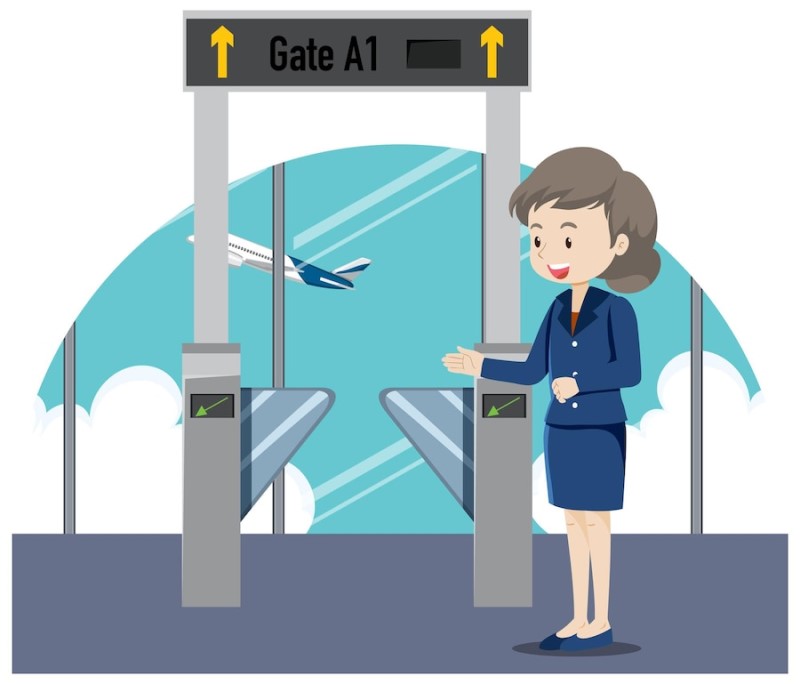
• Airport equipment tracking with (IoT) capability
Airports around the world need a variety of equipment to ensure smooth operations and a better passenger experience. In addition to biometric technology, artificial intelligence and big data, airports can use modern Internet of Things (IoT) innovations to simplify and enhance the tracking of their assets. Internet of Things (IoT) equipment tracking solutions can be applied across the entire smart airport ecosystem and at every stage of the passenger journey, from the moment the passenger arrives at the airport to the moment the passenger arrives at the destination. These Internet of Things (IoT)-based innovations ensure that aviation industry officials have complete visibility and thus manage their assets and resources in the best possible way.
3. Intelligent runway management
Flight delays are one of the annoying problems in the aviation industry and airline services, which cause huge losses to airports and passengers every year. By using the Internet of Things (IoT), authorities can effectively monitor weather conditions, including air humidity, wind speed, momentary changes in temperature and weather conditions, and prevent flight delays. This is done by connecting weather monitoring lights across the runway to check, update the weather conditions and share it with the data management center. As a result, flight management is improved and costs are saved. In addition, intelligent runway monitoring can keep passengers updated about delays and layoffs and help them manage their time.
4. Application of Internet of Things (IoT) innovations inside the aircraft cabin
• Monitor the health of passengers
Using the Internet of Things (IoT), sensors can be embedded inside airplane seats to help flight attendants provide more comfort and safety to passengers by measuring passengers' anxiety, heart rate, body temperature, and other vitals.
• Climate control in the cabin
Using sensors based on temperature detection inside the cabin can bring a different experience for passengers. This can be done with automatic temperature control systems strategically placed in the cabin to adjust the cabin temperature based on location and weather forecast.
• Flight safety
Different parts of the aircraft have different and need-based sensors that can track the speed of the aircraft, the angle of the aircraft, weather conditions, etc. and send the information to the central management system, which can help the devices communicate with each other and monitor the relevant authorities. This system can also guarantee the safety of the flight by transferring data and establishing communication in case of any abnormality in any part of the plane.
(IoT) opportunities in aviation industry management
Implementing smart solutions and integrating equipment in airports helps to improve passenger experience and increase employee productivity. In addition, the following can be mentioned as part of the benefits of smartening in airports:
- Improving and optimizing airport working hours
- Optimizing demand and responding faster to passengers' needs
- Reducing operating costs, improving productivity and completing operations
- Significant improvement of air traffic control and determining the time of landing of planes at the airport
- Proper aircraft maintenance and increased travel security through the analysis of collected data
- Increased monitoring and security through biometric monitoring systems, advanced cybersecurity and greater reliability in facility operations and maintenance.
Benefits of implementing IoT at the airport for passengers
• Smart parking at the airport
One of the issues that can take a lot of time from travelers and cause problems for them is airport parking. With the use of smart signs, the number of empty parking spaces, the location of each of them and other relevant information are known, so there is no need to spend time finding a parking space. This work can be very useful for optimizing parking lots and increasing their capacity.

• Online ticket booking
Smart airports provide the possibility for their passengers to book their desired flight online with the expected facilities and services by spending minimum time and cost.
• Receive the flight card in a smart way
With the smartening of airports, there is no need to waste time and wait in long lines to get a flight card. Because passengers can scan the barcode through special devices, without delay and receive their flight card quickly.

IoTSmile platform for smartening airports
All the advancements that smart airports offer are just some of the ways that technology has impacted the airport environment. While the safety, security and speed of service will always be the first priority of passengers, the integration of new technologies will allow airport managers to facilitate and improve daily and future operations.
Io Smile’s integrated operation platform turns the airport into a smart airport by providing smart solutions.
Among the most important achievements that the use of this platform brings are:
- Online ticket booking
- Intelligent security and safety system
- Smart lighting control
- Intelligent control of the ventilation system
- Intelligent matching of cargo with passengers
- Receive the flight card in a smart way
- Intelligent parking control and traffic
- Intelligent system for controlling the entry and exit of people with face recognition
- Smartphone application to receive airport terminal information and flight information

At the end, we hope that we have been able to provide you with appropriate information by introducing and reviewing the advantages of smart airports.
To receive advice and prepare any of the products, you can contact us by calling the numbers announced on the site, sending an email or registering a ticket. Our colleagues are ready to answer and guide you.
References:
- Gihub: Sensors to Improve Airport Efficiency and Experience-9 December 2020
- Nexusintegra: Smart Airports, the digital transformation of airports
- Airporturbanism: What is a Smart Airport?-March 12th, 2019
- Theairportshow: 5 ways in which technology is shaping the smart airport
- Skift: The Rise of Smart Airports: A Skift Deep Dive-November 20th, 2019
- Analyticssteps: 8 Applications of IoT in Aviation Industry-Jun 17, 2021
foundNothing



